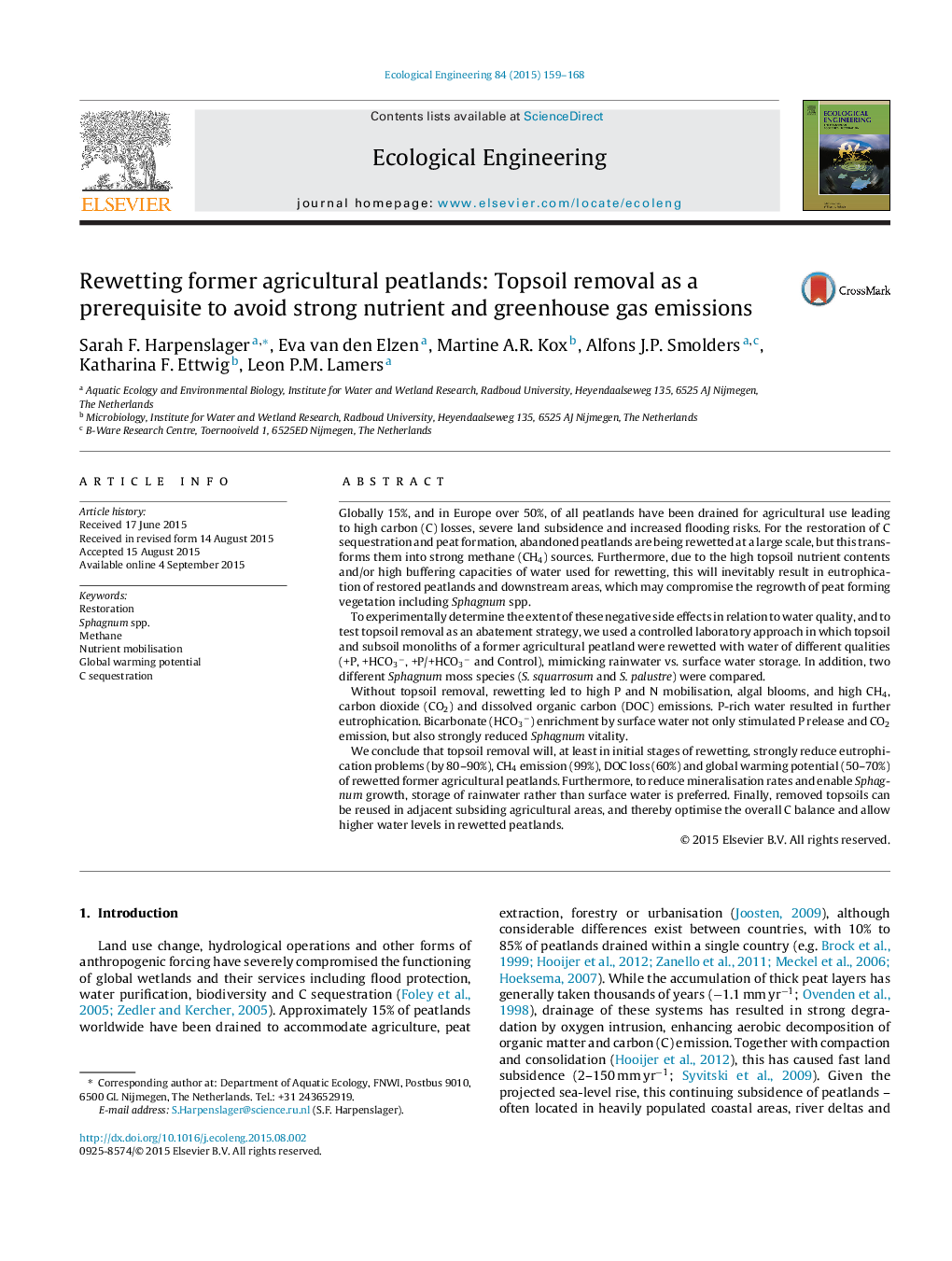| کد مقاله | کد نشریه | سال انتشار | مقاله انگلیسی | نسخه تمام متن |
|---|---|---|---|---|
| 4388779 | 1618015 | 2015 | 10 صفحه PDF | دانلود رایگان |
• We studied the negative side effects of rewetting former agricultural peatlands.
• Rewetting leads to excessive nutrient and methane emissions.
• HCO3−-rich water increases mineralisation and halts Sphagnum growth.
• Topsoil removal strongly reduces GHG emissions and eutrophication.
Globally 15%, and in Europe over 50%, of all peatlands have been drained for agricultural use leading to high carbon (C) losses, severe land subsidence and increased flooding risks. For the restoration of C sequestration and peat formation, abandoned peatlands are being rewetted at a large scale, but this transforms them into strong methane (CH4) sources. Furthermore, due to the high topsoil nutrient contents and/or high buffering capacities of water used for rewetting, this will inevitably result in eutrophication of restored peatlands and downstream areas, which may compromise the regrowth of peat forming vegetation including Sphagnum spp.To experimentally determine the extent of these negative side effects in relation to water quality, and to test topsoil removal as an abatement strategy, we used a controlled laboratory approach in which topsoil and subsoil monoliths of a former agricultural peatland were rewetted with water of different qualities (+P, +HCO3−, +P/+HCO3− and Control), mimicking rainwater vs. surface water storage. In addition, two different Sphagnum moss species (S. squarrosum and S. palustre) were compared.Without topsoil removal, rewetting led to high P and N mobilisation, algal blooms, and high CH4, carbon dioxide (CO2) and dissolved organic carbon (DOC) emissions. P-rich water resulted in further eutrophication. Bicarbonate (HCO3−) enrichment by surface water not only stimulated P release and CO2 emission, but also strongly reduced Sphagnum vitality.We conclude that topsoil removal will, at least in initial stages of rewetting, strongly reduce eutrophication problems (by 80–90%), CH4 emission (99%), DOC loss (60%) and global warming potential (50–70%) of rewetted former agricultural peatlands. Furthermore, to reduce mineralisation rates and enable Sphagnum growth, storage of rainwater rather than surface water is preferred. Finally, removed topsoils can be reused in adjacent subsiding agricultural areas, and thereby optimise the overall C balance and allow higher water levels in rewetted peatlands.
Journal: Ecological Engineering - Volume 84, November 2015, Pages 159–168
